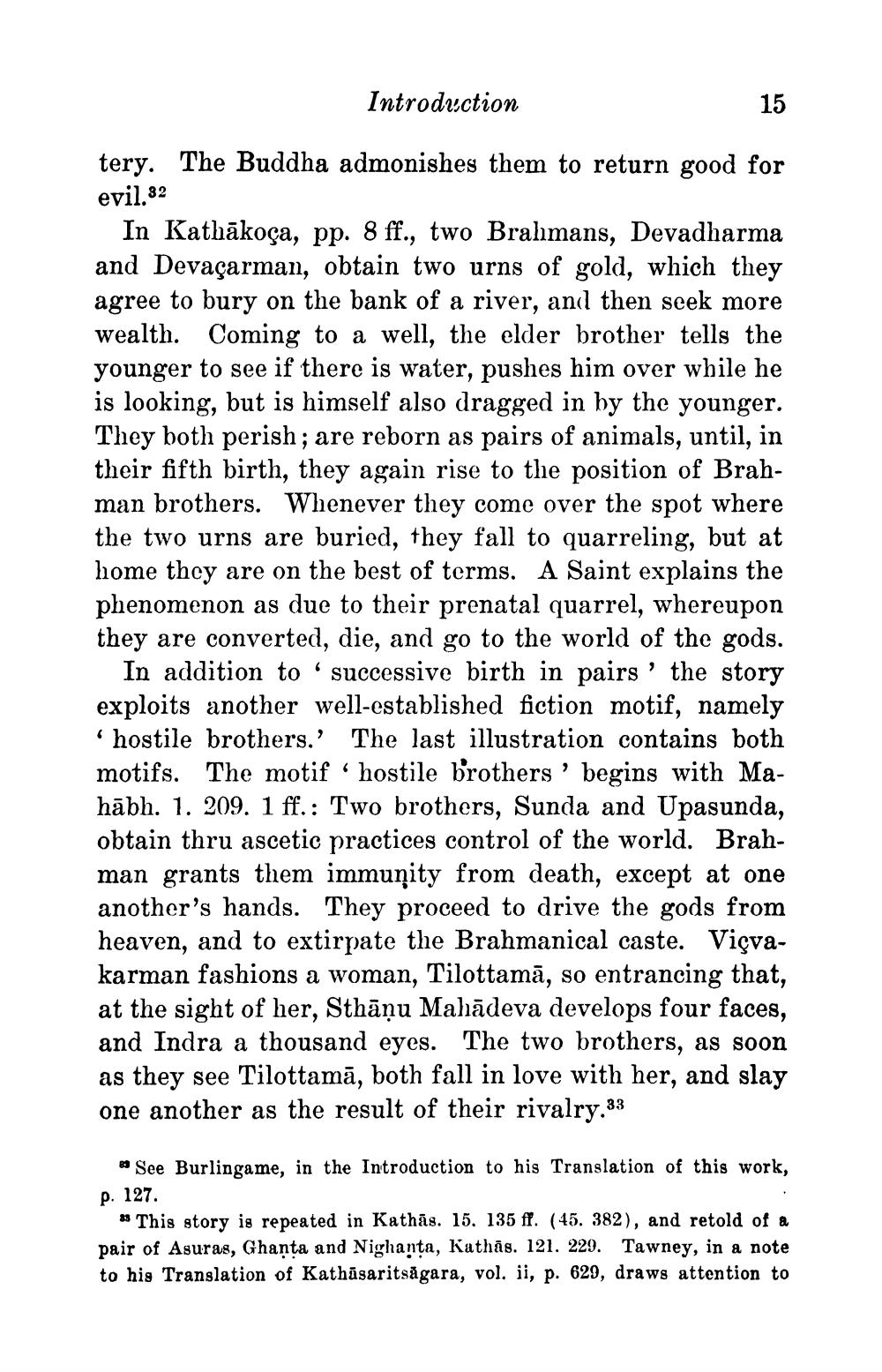________________
Introduction
15
tery. The Buddha admonishes them to return good for evil.32
In Kathākoça, pp. 8 ff., two Brahmans, Devadharma and Devaçarman, obtain two urns of gold, which they agree to bury on the bank of a river, and then seek more wealth. Coming to a well, the elder brother tells the younger to see if there is water, pushes him over while he is looking, but is himself also dragged in by the younger. They both perish; are reborn as pairs of animals, until, in their fifth birth, they again rise to the position of Brahman brothers. Whenever they come over the spot where the two urns are buried, they fall to quarreling, but at home they are on the best of terms. A Saint explains the phenomenon as due to their prenatal quarrel, whereupon they are converted, die, and go to the world of the gods.
In addition to successive birth in pairs’ the story exploits another well-established fiction motif, namely 'hostile brothers.' The last illustration contains both motifs. The motif hostile brothers' begins with Mahābh. 1. 209. 1 ff.: Two brothers, Sunda and Upasunda, obtain thru ascetic practices control of the world. Brahman grants them immunity from death, except at one another's hands. They proceed to drive the gods from heaven, and to extirpate the Brahmanical caste. Viçvakarman fashions a woman, Tilottamā, so entrancing that, at the sight of her, Sthāņu Mahādeva develops four faces, and Indra a thousand eyes. The two brothers, as soon as they see Tilottamā, both fall in love with her, and slay one another as the result of their rivalry.33
See Burlingame, in the Introduction to his Translation of this work, p. 127.
* This story is repeated in Kathās. 15. 135 ff. (45. 382), and retold of a pair of Asuras, Ghanta and Nighanta, Kathāg. 121. 229. Tawney, in a note to his Translation of Kathāsaritsågara, vol. ii, p. 629, draws attention to




